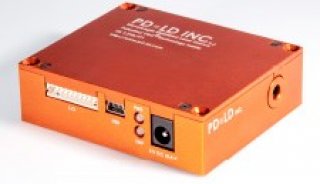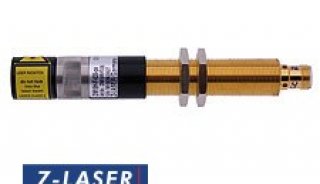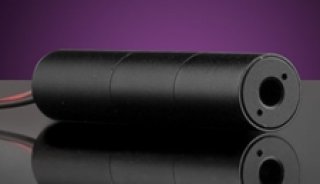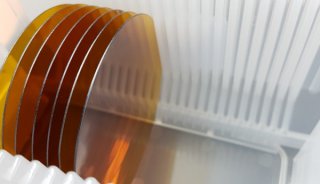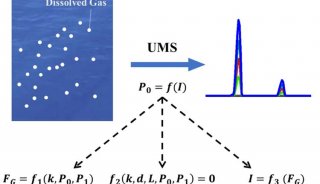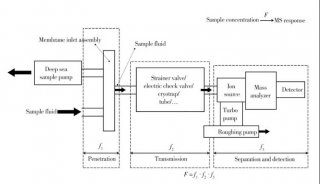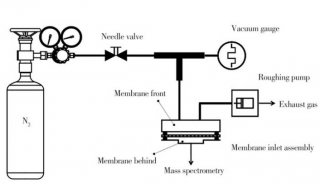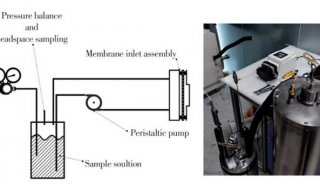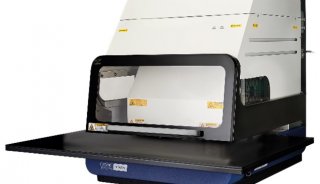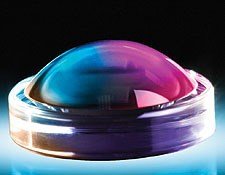蓝色激光二极管支持的12.4 Gbps水下通信
为了在长距离的自来水和海水环境中实现高速水下无线光通信(UWOC),通过预平准16正交幅度调制(QAM)正交频率直接调制450nm蓝色GaN激光二极管(LD)采用分时多路复用(OFDM)数据来实现其最大传输容量高达10 Gbps。所提出的自来水中的UWOC提供了从5.2到12.4Gbps的最大可允许通信比特率增加,相应的水下传输距离从10.2到1.7m显着减小,表现出比特率/距离衰减斜率-0.847Gbps / m。当在海水中进行相同类型的UWOC时,由杂质引起的光散射使蓝色激光功率衰减,从而以0.941Gbps / m的稍微更高的衰减率降低传输。基于蓝色LD的UWOC实现了高达7.2 Gbps的16-QAM OFDM比特率,用于海水中传输超过6.8米。
Emerging underwater communication technology developed for commercial sea resource exploration, military warship-to-submarine communication, and satellite-to-submarine communication1 is a compelling research topic. Figure 1 presents three carriers, namely acoustic waves, microwaves, and optical waves, all of which are applicable for underwater communication, but also exhibit specific practical problems. Among these, the underwater acoustic wave (UWAC) system can be applied only in low-noise environments for low-speed content. This is because of its strong attenuation in seawater, exhibiting inverse proportionality to the wavelength, as well as its significant propagation delay and the low signal-to-noise ratio (SNR) of data in the context of background ocean noise. In 1996, Stojanovic et al. proposed a UWAC system at 40 kbps2. In 2002, Zielinski et al. constructed an 8-kbps digital UWAC system over 13 km in length and 20 m in depth3. In 2005, Ochi et al. preliminarily employed 32-quadrature amplitude modulation (QAM) to construct a 125-kbps UWAC system with a symbol error rate of 10−4 4. Zakharov et al. demonstrated the UWAC system with an orthogonal frequency division multiplexing (OFDM) data stream5. In addition, Li et al. proposed a UWAC system that applies the multiple-input-multiple-output technique6. Moreover, Song et al. demonstrated a UWAC system with 60-kbps 32-QAM data covering a bandwidth of 32 kHz in a seawater environment more than 100 m deep with a distance of over 3-km7. However, despite the aforementioned research, the transmission rate of the UWAC system is limited by its narrow modulated bandwidth.
Schematic of underwater communication system.
To overcome the insufficient data bandwidth of the UWAC system, Moore et al. proposed a preliminary simulation to demonstrate that a microwave with tens of kilowatts power can transmit over tens of kilometers on the surface of seawater8. In 2004, Al-Shamma’a et al. employed a microwave carrier at a frequency of several MHz for underwater microwave communication (UWMC) with a horizontal distance of 85 m and a marked attenuation of 80 dB9. In 2006, Shaw et al. demonstrated a UWMC system with a transmission data rate of 500 kbps over 90 m10, and Uribe et al. proposed an UWMC system with an improved transmission capacity of 10 Mbps over 100 m for underwater sensing networks11. However, the high-frequency (short-wavelength) carrier induced high attenuation in seawater that also limited the transmission capacity and distance of the system12. In comparison, at higher frequencies, a microwave carrier enables wider data bandwidth than the acoustic wave does. However, the transmission distance of the UWMC system is notably short because of its extremely high attenuation.
To satisfy the requirement of high-capacity underwater machine-to-machine data transmission, a high-speed underwater optical communication (UWOC) system is highly effective compared with currently available carriers such as microwaves and acoustic waves. In contrast to acoustic wave and microwave carriers, light emitting diodes (LEDs) with lower attenuation were proposed for implementation in the UWOC system to provide a transmission data rate of up to several tens of Mbps13,14,15,16,17. This is because blue waves exhibit the lowest attenuation coefficient among all visible wavelengths in seawater18,19. In 2013, Rashed et al. examined the transmission performances of a short-reach UWOC system in different types of seawater collected from several oceans. Transmission in pure seawater revealed a higher performance level than the other available carriers did20. In addition, Chen et al. employed a double freeform reflector to collimate the LED light for improving the throughput power and SNR of the UWOC system21. In 2015, Liu et al. demonstrated an LED-based single-input-multi-output UWOC system that enabled an effective transmission distance of over 60 m22. Moreover, a variable-focus LED was utilized to construct both fresh-water and seawater UWOC links23.
As usual, the proposed LED-based UWOC system inevitably suffered from an insufficient modulation bandwidth, thereby decreasing the allowable data rate and the reachable transmission distance. Therefore, a laser diode (LD) with a high coherence for providing large modulation bandwidths and small beam divergence was proposed to construct high-speed UWOC networks24,25,26,27,28. In 2008, Hanson et al. employed a frequency-doubled green laser at 532 nm to implement a UWOC link at 1 Gbps over a 2-m long water pipe29. In 2015, Nakamura et al. applied a directly OFDM-modulated blue LD at 405 nm to enact a 4.8-m underwater transmission at 1.45 Gbps30. Subsequently, Oubei et al. demonstrated a UWOC system with a nonreturn-to-zero on-off-keying (NRZ-OOK) data format at 2.3 Gbps over 7 m by utilizing a TO-can packaged LD at 520 nm31. Moreover, a blue LD-based UWOC system for transmitting 2.488-Gbps NRZ-OOK data over 1 m was reported by Najda et al.32. More recently, Oubei et al. demonstrated a 450-nm LD-based UWOC system for carrying 4.8-Gbps 16-QAM OFDM data33, and Xu et al. proposed a 4.883-Gbps UWOC system for transmitting 32-QAM OFDM data over 6 m34. Previous studies have demonstrated that both the transmitted data rate and the distance of blue LD-based UWOC have potential for being upgraded through improving the bandwidths of direct modulation and detection. In particular, the over-bias of the blue LD and the pre-emphasis of the QAM OFDM format can play crucial roles in enhancing the allowable bandwidth of direct modulation.
In this study, the OFDM subcarrier amplitude pre-emphasized data format was employed to directly modulate the blue LD at 450 nm and optimize its transmission performance to more than 10.2 m in both tap-water and seawater environments. The blue LD was observed to be overly biased for carrying 16-QAM OFDM data. After over-biasing and pre-emphasizing, the transmitted error vector magnitudes (EVMs), SNRs and bit-error-rates (BERs) of the received data format at different biased currents and pre-leveling slopes were compared and discussed. With the reflector-folded underwater path scheme, three underwater transmitting distances of 3.4, 6.8, and 10.2 m were selected to characterize the maximal allowable transmission data rates before and after OFDM subcarrier amplitude pre-leveling.
Results
Optimization of transmission performance of a 450-nm blue LD-based UWOC system over a 1.7-m tap-water channel
The temperature-controlled package of a 450-nm blue LD in TO-can is illustrated in Fig. 2(a). It consists of a copper mount, a TE cooler, and a thermistor for maintaining the temperature at 25 °C to stabilize the output dynamics of the blue LD. The optical spectrum and the power-to-current (P-I) response illustrated in Fig. 2(b) reveal that the blue LD exhibited a peak wavelength at 454 nm, a threshold current of 31 mA, and a spectral linewidth of 6.52 nm. The dP/dI slope and external quantum efficiency were calculated as 0.7 W/A and 0.25, respectively. From the frequency response of the 450-nm blue LD shown in Fig. 2(c), it can be observed that the relaxation oscillation frequency was continuously up-shifted by increasing the bias from 65 to 100 mA to suppress the relative intensity noise (RIN) level at the cost of inevitably sacrificing the intensity slope and flatness of the modulated throughput spectrum. After optimizing the bias current of the 450-nm blue LD, the 3-dB bandwidth was 1.5 GHz at a bias current of 95 mA (equivalent to 3Ith). To carry 16-QAM OFDM data at 8 Gbps covering a bandwidth of 2 GHz for transmission over the 1.7-m long UWOC system, the bias current was increased from 70 to 95 mA. The received constellation plot revealed an EVM reduction from 13.3% to 12.6% resulting from significant RIN suppression and appropriate data-clipping, as shown in Fig. 2(d). However, continuously increasing the bias current to 100 mA degraded the EVM to 13.1% because of the decreased throughput intensity and insufficient modulation depth. The upper limit of EVM was 17.4% for passing the forward error correction (FEC) criterion.
Output characteristics and optimization of TO-can-packaged 450-nm blue LD.
To enlarge the allowable transmission bit rate of the 450-nm blue LD-based 1.7-m UWOC system, the 16-QAM OFDM data bandwidth was gradually increased to evaluate the trend of EVM degradation, as shown in Fig. 3(a). Increasing the data bandwidth from 2 to 3 GHz significantly degraded the EVM of the received constellation plot from 12.6% to 16.6%, approaching the upper limit set by the FEC criterion. Encoding the broadband 16-QAM OFDM data beyond 3.1 GHz resulted in a distorted constellation with an EVM of 18.5%, which exceeded the upper limit of the FEC criterion (17.4%). At a distance of 1.7 m in a tap-water environment, the maximum transmission bit rate, SNR, and BER of 12 Gbps, 15.6 dB, and 2.7 × 10–3, respectively, were obtained with corresponding subcarrier SNR spectra and constellation plots, as shown in Fig. 3(b). Subsequently, pre-leveling of the OFDM subcarrier power spectrum was employed to compensate the significant SNR declination of the received QAM data at high OFDM subcarrier frequencies, as shown in Fig. 3(c). Consequently, the average EVM was effectively decreased from 17.4% to 16.8% by monotonically increasing the power pre-leveling slope from 0.38 to 1 dB/GHz. Conversely, excessively increasing the power pre-leveling slope to 1.3 dB/GHz degrades the average EVM to 17% because over pre-leveling inevitably sacrifices the SNR of the received QAM data at low OFDM subcarrier frequencies35,36. When enlarging the bandwidth of 16-QAM OFDM data to 3.1 GHz, the subcarrier SNR response and corresponding constellation plots before and after pre-leveling with a slope of 1 dB/GHz are presented in Fig. 3(d). The clean constellation plot of the received QAM data with its average SNR improved from 14.7 to 15.5 dB and BER suppressed from 5.8 × 10−3 to 2.9 × 10−3, verified the blue LD-based UWOC system for 12.4-Gbps QAM-OFDM transmission over 1.7 m.
https://www.ncbi.nlm.nih.gov/pmc/articles/PMC5240338/
Blue Laser Diode Enables Underwater Communication at 12.4 Gbps
Tsai-Chen Wu,1 Yu-Chieh Chi,1 Huai-Yung Wang,1 Cheng-Ting Tsai,1 and Gong-Ru Lina,1








